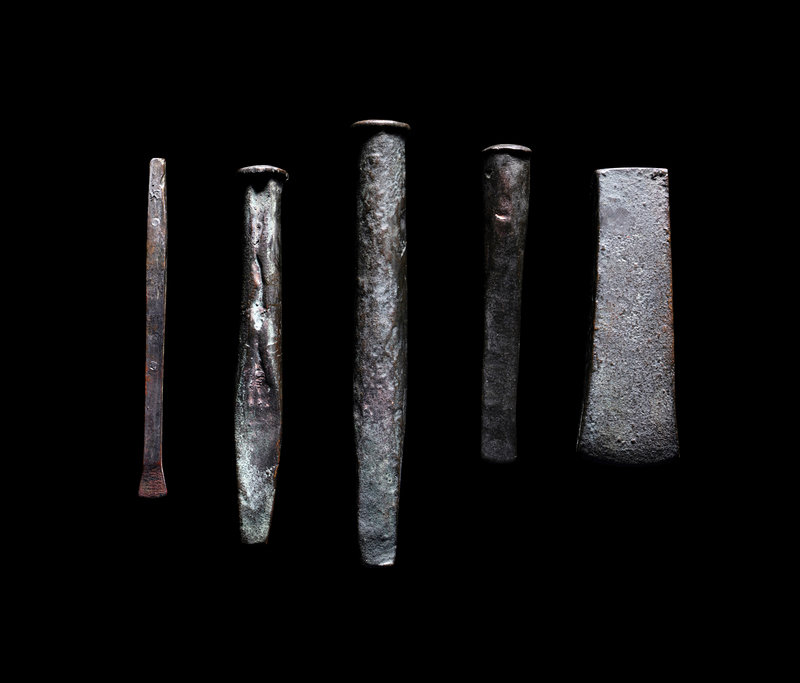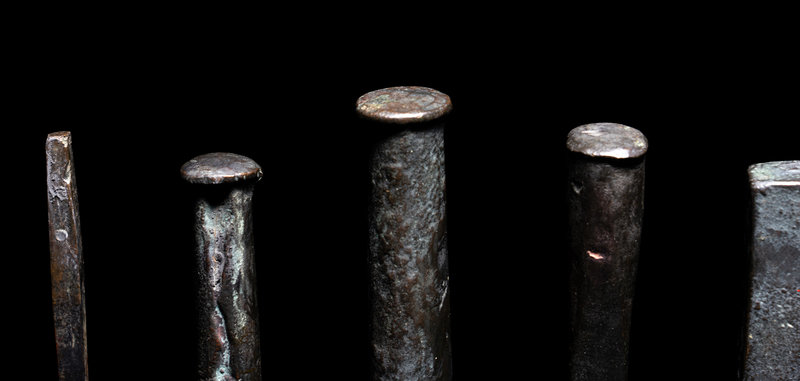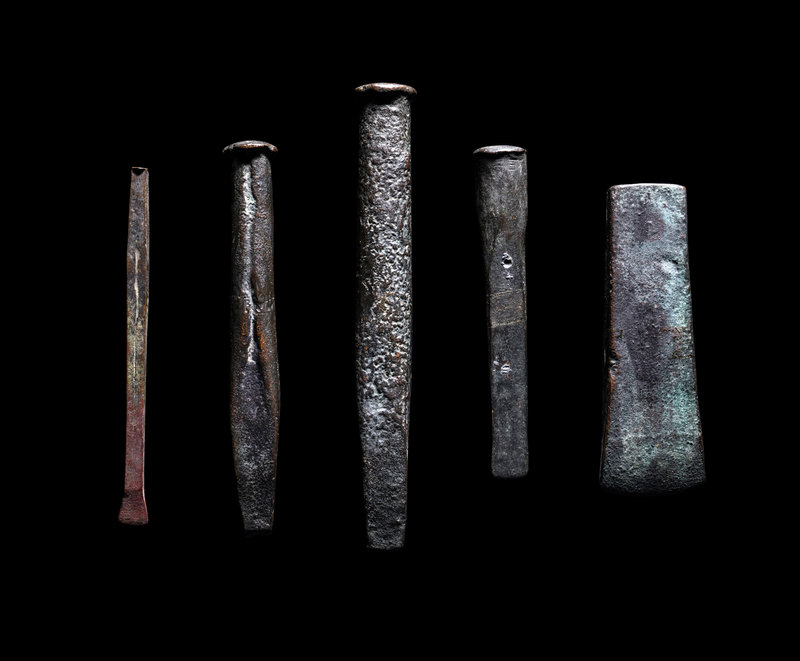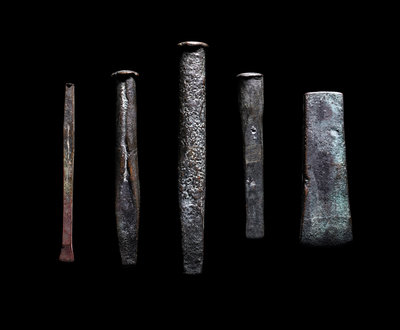Lot 62
Provenance:
L.A. Wilkie (1900-1974), Des Plaines, Illinois.
Wilkie Brothers Foundation, Illinois, 29 January 1974-2007; where acquired by the present owner.
Mankind and Tools
For early humans and several of their hominin ancestors, stone tool production required a high degree of technical sophistication. Acheulean hand axes have been found in many parts of Africa, Asia, and Europe and were among the most used of any stone tools (Lot 58). In earlier Oldowan tools, hominins struck a core with a hammerstone to break off flakes to use as cutters or choppers. Homo erectus built upon this technique, carefully shaping the prized cores of Acheulean hand axes in addition to their flakes. The large cutting edge of these symmetrical bifaces could be used for scraping animals, chopping wood, digging, and possibly even throwing at prey.
Around 300,000 years ago during the Middle Paleolithic, early humans developed even more meticulous advances with the Levallois technique. The craftsman prepared a tortoise-shaped core from which a much more controlled flake could be struck off. Hunter-gatherers in the luscious grass plains of what is now the Sahara Desert in Egypt employed a version of this technology for their vast assemblage of spear points, celts, and scrapers (Lot 59).
Some of the highest quality stone tools ever made are to be found at the very end of prehistory in Egypt during the 4th Millennium B.C. (Lots 60, 61). Having long shifted towards a sedentary lifestyle of agriculture, Egyptians now sourced flints from limestone cliffs to produce blades of a much larger size. Luxury ripple-flaked tools appear in elite burials, with one face worked and the opposite smoothly polished. Often ceremonial, they display a high degree of delicate order in their serration and flaking.
As humans moved from the Neolithic to the Bronze Age they began incorporating copper alloys into their toolkits. The ancient Egyptians used bronze chisels, adzes, and saws with abrasive methods to quarry and shape even the hardest stones (Lot 62). This innovation produced some of the most impressive monumental art and architecture of the ancient world.





